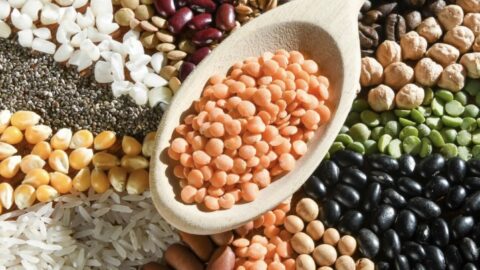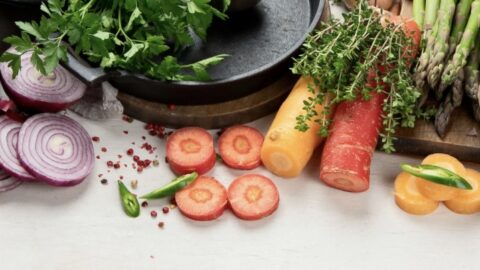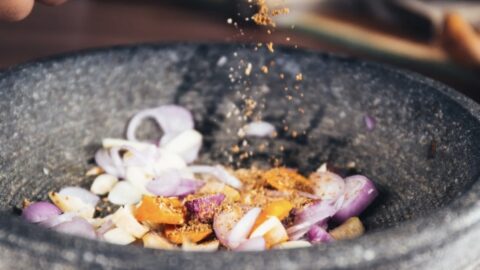Eating a Plant-Based Diet in a Food Desert: Challenges & Solutions
I remember talking to a woman a few years ago. She was determined to transition to a plant-based diet after her doctor warned her about high blood pressure and prediabetes. But she lived in a food desert—no grocery store within miles, just a few corner stores and fast-food chains.
“I want to eat healthier,” she told me, “but I don’t have access to fresh fruits and vegetables like everyone else seems to.”
Her frustration was real. The options in her neighborhood were mostly canned goods, frozen meals, and overpriced snacks. She felt stuck, like eating plant-based just wasn’t possible for her. But after we talked through some strategies, she realized that she could make it work—by choosing the right staples, making the most of affordable resources, and getting creative with what was available.
Now, she regularly makes hearty lentil soups, peanut butter oatmeal, and veggie-packed rice bowls—all without relying on fresh produce. She found ways to nourish her body despite the barriers in her environment.
If you relate to her struggle, you’re not alone. Living in a food desert makes healthy eating harder, but not impossible. Whether you’re in a rural area with no supermarkets or an urban neighborhood with only convenience stores, these 10 strategies can help you maintain a plant-based diet—even when fresh food is hard to find.
10 Smart Ways to Eat a Plant-Based Diet in a Food Desert

1. Rely on Canned and Frozen Produce
If fresh produce is scarce or too expensive, opt for canned and frozen vegetables and fruits. These options are often just as nutritious as fresh produce and have a much longer shelf life. Look for:
- Canned beans, tomatoes, and vegetables (low-sodium if possible)
- Frozen fruits and veggies (without added sugars or sauces)
- Shelf-stable tofu for a plant-based protein option

2. Buy Dried Staples in Bulk
Bulk dried foods like beans, lentils, rice, and whole grains are budget-friendly and long-lasting. They form the backbone of many plant-based meals and can be used in soups, stews, and salads.

3. Utilize Local Dollar Stores and Discount Retailers
Many dollar stores and discount retailers carry plant-based essentials like:
- Canned beans and vegetables
- Rice, pasta, and oats
- Shelf-stable plant milks
- Peanut butter and nut butters
These stores can be valuable for stocking up on basic ingredients at lower prices.

4. Get Creative with Plant-Based Protein Sources
If fresh tofu, tempeh, or plant-based meat alternatives aren’t available, try these accessible protein sources:
- Canned or dried beans (black beans, chickpeas, lentils)
- Nut butters (peanut, almond, sunflower seed butter)
- Seeds (sunflower, pumpkin, chia)
- Oats and whole grains

5. Plan Meals Around Non-Perishable Ingredients
To maximize what’s available, plan meals around affordable and shelf-stable ingredients. Here are some easy meal ideas:
- Lentil soup with canned tomatoes and frozen spinach
- Peanut butter and banana oatmeal
- Chickpea salad sandwich using canned chickpeas and mustard
- Black bean and corn tacos with store-bought tortillas

6. Make the Most of Food Pantries and Community Resources
If food assistance programs are available in your area, take advantage of them. Many food banks offer dried beans, canned goods, and whole grains. Some even have fresh produce programs or mobile markets.

7. Start a Small Indoor or Outdoor Garden
Even in a food desert, small-scale gardening is possible. Herbs, leafy greens, and some vegetables can be grown in containers on a windowsill, balcony, or small outdoor space. If community gardens are available, they can also be a great resource.

8. Use Online Delivery Services and SNAP Benefits
If transportation is a barrier, check if online grocery delivery is available in your area. Some major retailers accept SNAP/EBT benefits for online orders, making it easier to access plant-based staples.

9. Opt for Simple, Whole Foods Over Processed Vegan Alternatives
Plant-based processed foods (like frozen vegan meats and pre-packaged meals) are often expensive and not always available in food deserts. Instead, stick to simple, whole foods that provide the same nutrients at a lower cost.

10. Learn Basic Cooking Skills to Stretch Ingredients
Cooking at home allows you to make the most of your ingredients. Learning to make staples like homemade vegetable broth, plant-based soups, and rice and bean dishes can help stretch food budgets while keeping meals nutritious.
Final Thoughts: Making Plant-Based Eating Possible in a Food Desert
Living in a food desert can make eating a plant-based diet more challenging, but it’s far from impossible. With strategic meal planning, affordable pantry staples, and resourceful shopping habits, you can nourish your body even when fresh food options are limited.
If you’re struggling with food access, remember that small changes add up. Start by incorporating more budget-friendly plant-based staples into your meals, and take advantage of community resources like food banks, mobile markets, and online grocery options.
You don’t have to do this alone! Let’s keep the conversation going—what are some challenges you’ve faced with plant-based eating in your area? What strategies have helped you make it work? Drop a comment below and share your experience!
![]() Don’t forget to subscribe to my newsletter for more tips, plant-based meal ideas, and practical guides for making this lifestyle accessible—no matter where you live.
Don’t forget to subscribe to my newsletter for more tips, plant-based meal ideas, and practical guides for making this lifestyle accessible—no matter where you live.
![]() [Guide on How to Ease into Being a Vegetarian]
[Guide on How to Ease into Being a Vegetarian]
![]() Follow me on social media for more plant-based content!
Follow me on social media for more plant-based content!
#plantbasedbudget #healthyfoodforless #foodjustice #thedestinedkitchen

